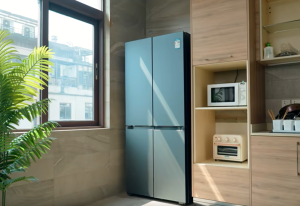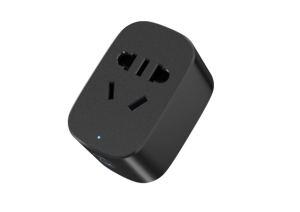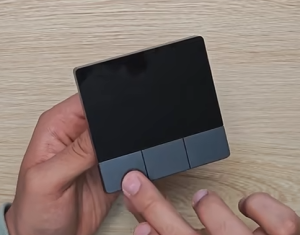Upgrade Your Home: Smart Solutions for Controlling Every Type of Air Conditioner
When it comes to setting up a fully smart home, a lot of folks are keen on smart control of their air conditioners. And why not? Once your AC is hooked up to your smart home system, it’s incredibly convenient. Not only can you control it remotely, but you can also integrate it into various quick-access scenes for even more seamless control.
But here’s the rub: there are just too many types of air conditioners out there, and the control methods are all over the place. Many people aren’t sure how to control their own AC units—or even if their units can be controlled at all. So today, let’s dive into how to smart-control different types of air conditioners.
Cabinet-Type Air Conditioners
First up, let’s talk about cabinet-type air conditioners. Now, I’m referring to the non-smart ones—not those fancy units that can directly connect to your smart home system. We’re talking about third-party cabinet ACs that can’t be directly integrated. These are typically controlled using infrared (IR) devices. For example, gadgets like IR-enabled smart speakers, the Xiaomi Central Gateway, or the Aqara M2 Hub—all devices with IR capabilities—can control cabinet ACs. The control method involves matching the AC’s infrared control code library or learning its IR codes for control.

Of course, there are drawbacks. Since IR control is line-of-sight, any obstruction in the path means no control. So, you can’t have anything blocking the signal. Another minor issue with using IR control for cabinet ACs remotely is the lack of status feedback. You might press “On,” but have no idea if the AC actually turned on. Many folks have asked me about this. I usually say it’s pretty simple—just stick a door sensor on the AC’s air outlet. If the control is successful and the outlet opens, the door sensor will provide status feedback.
Wall-Mounted Air Conditioners

Alright, moving on from cabinet ACs, let’s chat about wall-mounted air conditioners. Wall-mounted units have a specialized control device—the Air Conditioner Companion. Sure, you could use the IR-enabled smart speakers or other devices we mentioned earlier to control wall-mounted units, but I recommend using the Air Conditioner Companion. Why? Because it provides status feedback; it knows whether the AC is on or off.
Of course, it doesn’t work in every situation. For instance, some folks think the wiring for wall-mounted units is unsightly and opt for hidden installations. In that case, the wiring is hidden, but you can’t control it because it’s still IR-based and needs line-of-sight. So, when using this type of device, try to ensure there’s an unobstructed communication space between the AC plug and the unit. Then, using it to control your wall-mounted AC is no problem.
Matching success rates for these IR devices—including those we mentioned for cabinet ACs—are generally high, over 90%. Sure, we’ve encountered some brands with quirky code libraries that can’t be controlled, but such instances are rare.
VRF Systems

Next up, let’s tackle the most common and frequently asked question: controlling VRF (Variable Refrigerant Flow) systems. The device in question is the VRF controller. It’s primarily used to control multi-split central air conditioning systems, and it can also control some models of underfloor heating and fresh air systems. For ACs, it’s a one-to-many control setup. If you have a system that supports one-to-four, one-to-five, or one-to-seven units, you only need one VRF controller connected to your AC’s indoor and outdoor units to intelligently control multiple indoor units.
I’ve shared how to check VRF compatibility before, but many folks still say they don’t know. If you’re unsure, let’s go over it again. It’s quite simple:
- Open WeChat and search for “Air Conditioner Gateway Firmware Upgrade.”
- You’ll find a mini-program—open it.
- Click on “Support Query” at the bottom.
- You’ll see “One-to-Many VRF Query” at the top—click on it.
- Select the device you want to query (air conditioners, fresh air systems, or underfloor heating—we’re focusing on air conditioners).
- Input the model of your central air conditioner and the outdoor unit model.

This is the gold standard, folks. Whether your multi-split AC can be controlled—this is how you find out.
“Little Superman” Devices

Earlier, we also saw another option in that query section: the one-to-one “Little Superman” query. Many of you might be familiar with the “Little Superman” devices, including models like the Aqara Temperature Control Companion T1. These devices mainly control single indoor units of multi-split central ACs or some fan coil units. Unlike the VRF, this is a one-to-one control, only able to control one indoor unit.
Its advantage? Cost-effectiveness. VRF controllers—whether using Bluetooth Mesh, Wi-Fi, or Zigbee protocols—are quite pricey these days, while “Little Superman” devices offer better value.
To check compatibility:
- Click on “Support Query.”
- Select “One-to-One Little Superman Query.”
- Input your AC brand and the model of your indoor unit.
If it shows that it can be controlled and connected, you’re good to go. We usually place the device in the inspection port of the single indoor unit because it’s a bit bulky. The Aqara Temperature Control Companion T is smaller and can be placed in the bottom box of your AC. Installation methods are varied, and controlling it is simple and convenient.
Fan Coil Units and Water-Cooled Systems

So we’ve covered VRF and “Little Superman.” But what if you have a system with fan coil units, or you’re in a large apartment complex with a centralized water-cooled AC system? Is there a better way to control this type? Absolutely!
For this setup, there’s the Aiken S2. Currently, Aqara has a model called the Temperature Controller S3—very popular, very sleek, with an LCD screen. The S2 is actually its predecessor; they’re essentially the same, except one has an E-ink screen and the other an LCD. It’s a high-voltage controller, which can control high-voltage fan coil unit panels, fresh air systems (with high-voltage signals), and high-voltage underfloor heating systems. It’s a pretty versatile device.
Moreover, it can connect to HomeKit, Aqara Home, and Mi Home platforms. Since this device has been around for quite a while, it supports Mi Home. But it uses the Zigbee protocol, so you’ll need a separate Zigbee gateway to use it.
This device is pretty good—it’s just that the design is a bit plain, doesn’t match our current aesthetic, and doesn’t blend well with existing switches. So we don’t use it often, unless it’s for commercial projects or if there’s a special need that can’t be met otherwise.
Direct Replacement Panels
Let’s look at another device. Does this one look similar to the previous one? Yep. This is a device many people have been searching for—it can directly replace the air conditioner panel. After replacing it, this device can connect directly to your smart home platform, though it still uses the Wi-Fi protocol. That’s fine because, with a central gateway, you can achieve local operation.
The direct replacement method is simple, and it provides smart control. It’s not a high-voltage signal device; it controls multi-split systems. Does it look a bit… underwhelming? Yeah, it doesn’t match well with the switches in our homes in terms of aesthetics—not great. So we’ve given feedback to the manufacturers, asking them to produce something more attractive.
I mean, we’ve put so much thought, time, and effort into our home decor, making everything look refined and beautiful, matching our aesthetic—and then there’s this eyesore. So, friends, it’s essential to pay attention to aesthetic matching. Get the aesthetics right.
Wrapping Up
And that’s all I wanted to share with you today. If you still have questions or uncertainties about smart control of air conditioners, feel free to leave a comment or send me a message.
Oh, one more thing: the manufacturer of this device is currently working on a second-generation product. Reportedly, it’s something to look forward to. If there’s a really good one—similar in style to the Aqara S3—that would be fantastic: directly replacing the AC panel and integrating into smart control. That’s what we’re hoping for. And hopefully, the price won’t be too high, right? That way, more of us would have a reason to choose it.
Alright, that’s it for today’s post. If you have any questions about controlling your air conditioner, feel free to leave a comment or shoot me a message. I’ll get back to you as soon as I can. Thanks for reading!














Post Comment